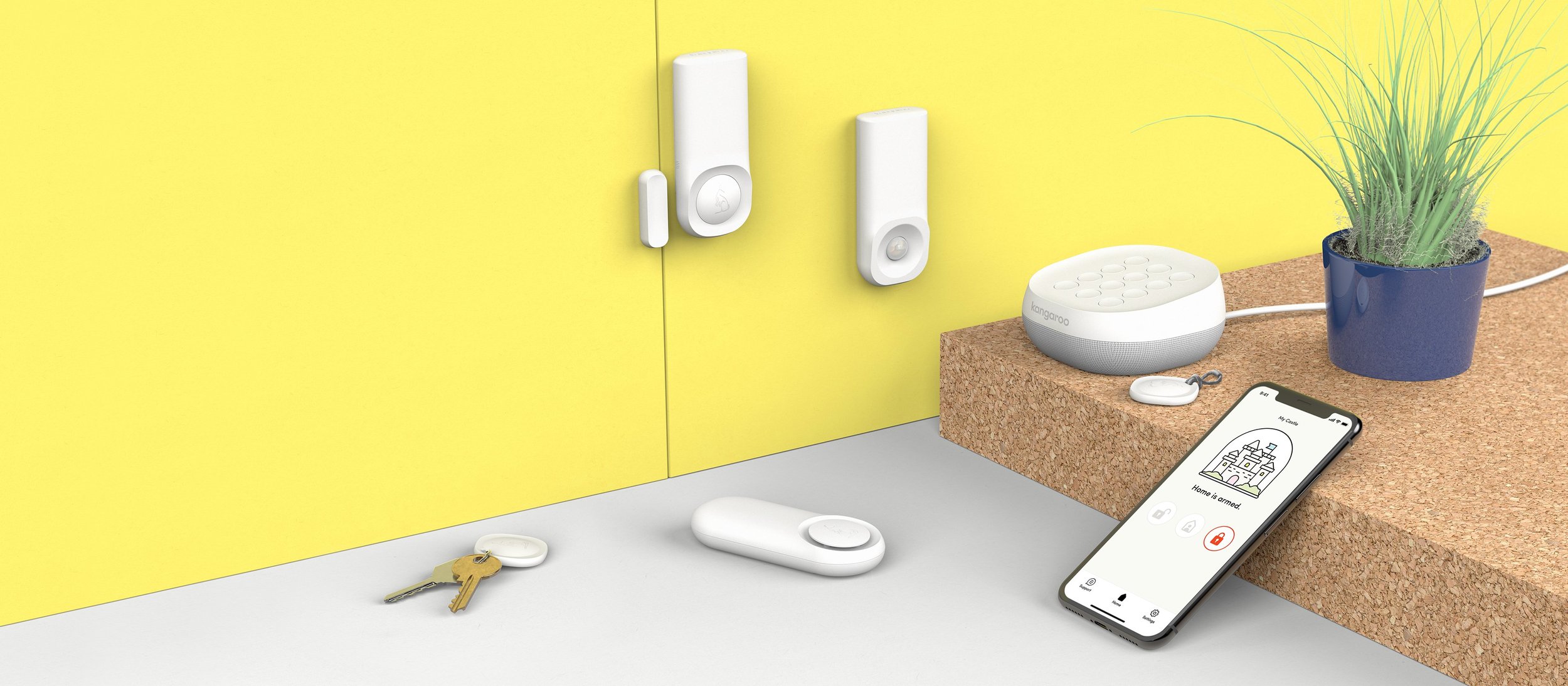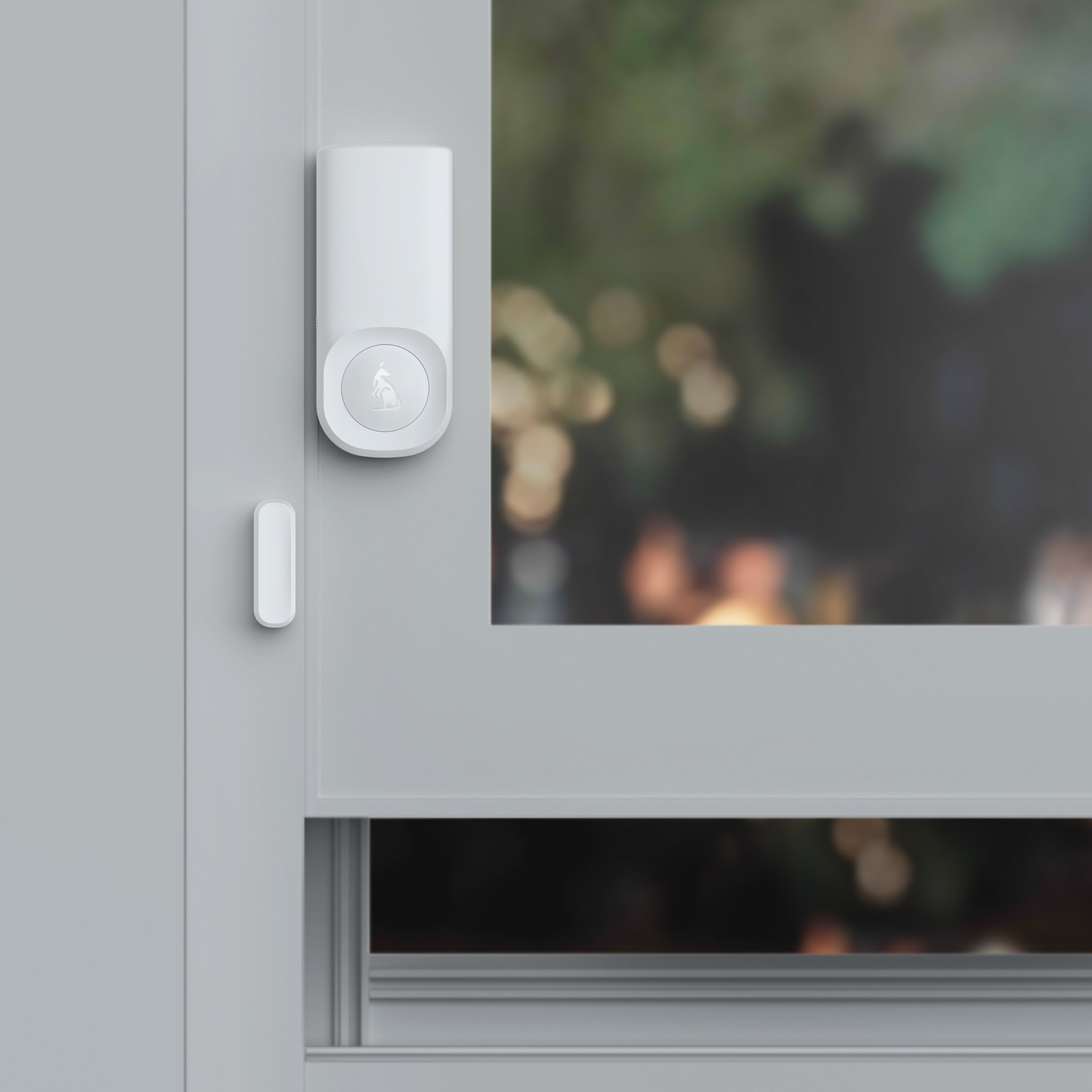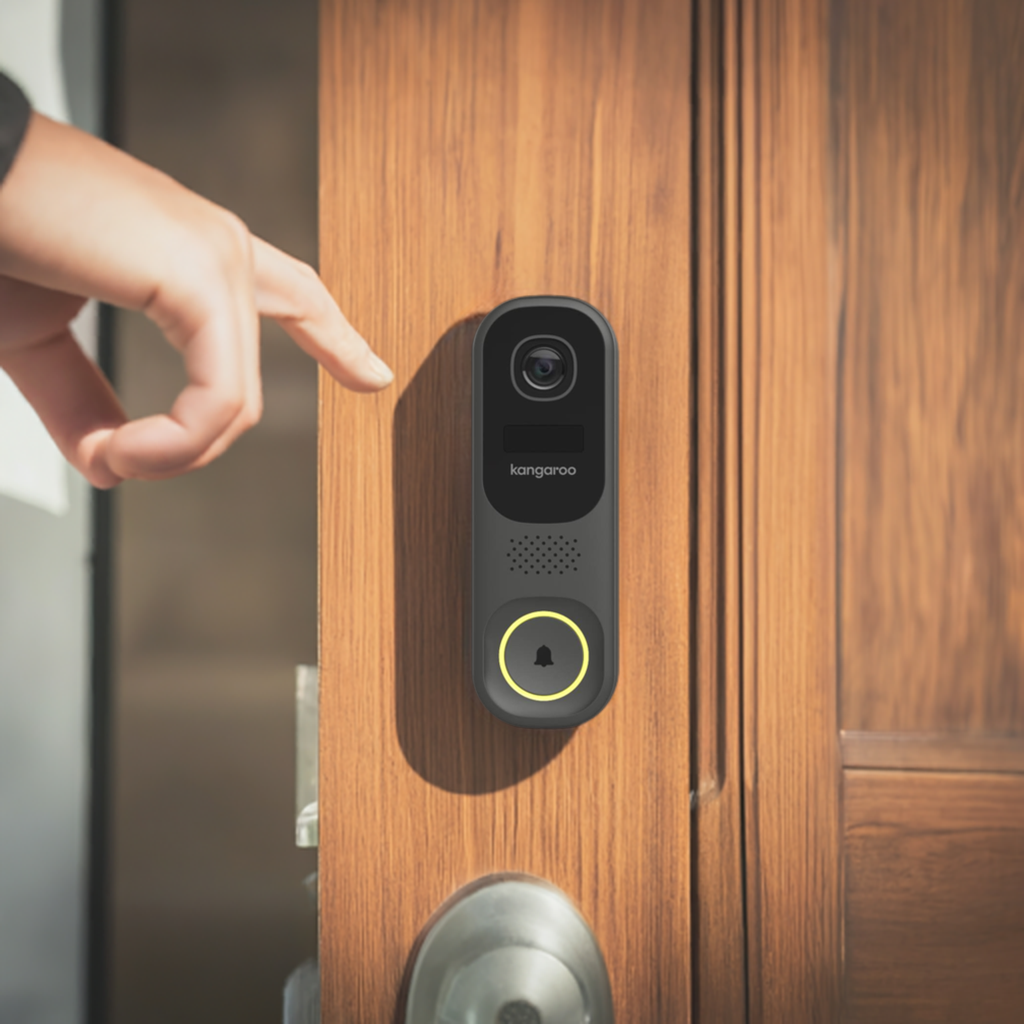Sensor Alarms: Best Alert System for Outdoor Spaces
Protecting your outdoor space is crucial for safeguarding your property and ensuring peace of mind. While traditional security measures exist, sensor alarms have emerged as a highly effective solution, offering unparalleled security and convenience. Let us delve into the world of sensor alarms, exploring their role in home security, their various types, and how they can be integrated with video doorbells for a comprehensive security system.
The Role of Motion Detectors in the Early Security Systems
While home security systems have existed for quite some time, the incorporation of motion sensors specifically is a relatively recent development. The 1970s marked a turning point in home security with the introduction of the first motion sensors. These early models primarily relied on ultrasonic waves to detect movement and trigger alarms.
Good Read:
Home Security: The History, The Evolution, The Future: This article by Origin Wireless states that the 1970s saw the "creation of motion sensors" specifically within the context of home security systems. (https://www.originwirelessai.com/)
The Definitive History of Home Security Systems: Homewatch Group also mentions the 1970s as the period when "ultrasonic waves" were first utilized in motion sensors for home security. (https://www.frontpointsecurity.com/blog/the-history-of-home-security)
Types of Motion Detectors Ideal for Outdoor Use
Several types of motion detectors excel in outdoor environments, each with its own strengths:
Passive Infrared (PIR): These energy-efficient sensors detect heat signatures emitted by warm objects like humans, making them ideal for most outdoor conditions.
Microwave: These sensors emit and receive radio waves, providing wider coverage but potentially susceptible to environmental interference.
Area Reflective: These sensors utilize a precisely aligned light beam and its reflection to detect movement, offering high accuracy.
Ultrasonic: These sensors emit high-frequency sound waves that bounce off objects, triggering an alarm if the pattern changes. They are effective in fog or darkness but prone to triggering false alarms due to wind or small animals.
The Critical Role Played by Motion Detectors in Home Security
Motion detectors have become an indispensable element in modern home security systems, offering a multitude of benefits that contribute to a safer and more secure environment:
Deterrence: The visible presence of motion detectors, particularly near entry points, acts as a powerful psychological deterrent against potential intruders. Knowing that their movements will be immediately detected and potentially recorded discourages many criminals from even attempting to target your property.
Early Detection: Motion detectors provide immediate alerts when unauthorized activity occurs within their designated area. This allows you to react swiftly, potentially confronting the intruder directly if you are present, or contacting the authorities for assistance. Early detection can also help minimize potential damage or loss, as you can take immediate steps to secure your property.
Evidence Collection: Many motion detectors are integrated with video surveillance systems, such as video doorbells or security cameras. When motion is detected, the cameras automatically begin recording footage, capturing valuable evidence of the incident. This recorded footage can be crucial for identifying suspects, providing concrete proof of a break-in attempt, and aiding law enforcement investigations.
Peace of Mind: Knowing that your home is equipped with a robust security system that includes motion detectors provides a significant sense of peace of mind. You can rest assured that your property is being monitored and that you will be alerted to any potential threats, even when you are away. This allows you to relax and enjoy your time without constant worry about the security of your home.
Top 5 Motion Detectors: A Quick Comparison
Here are the top 5 motion detectors, catering to different needs and preferences:
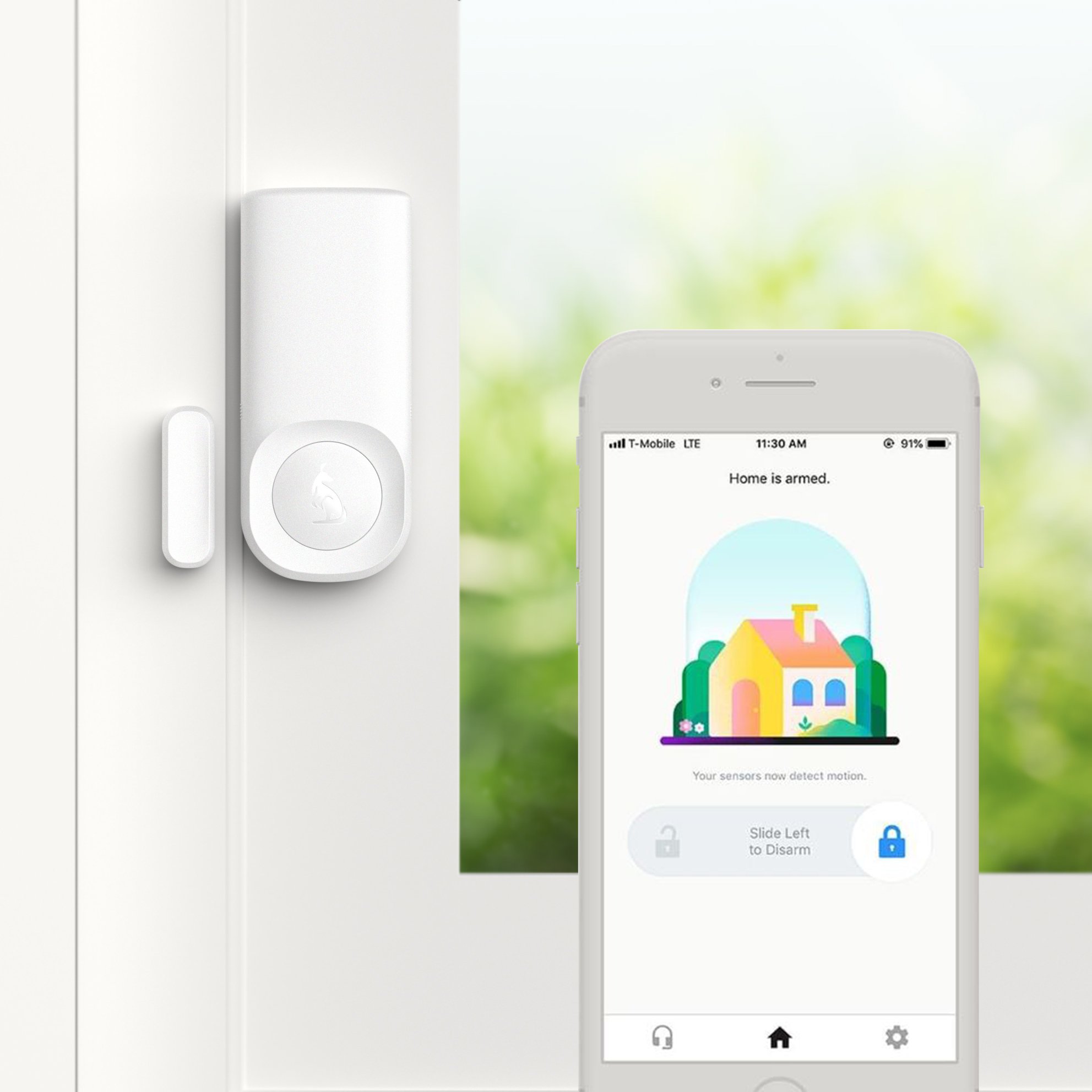
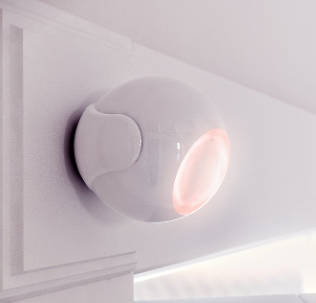



| Product Name | Price | Key Features | Pros/Why It's Top |
|---|---|---|---|
| Kangaroo Motion+Entry Sensor | $29.99 | Combines motion and door/window entry detection, pet immunity, long battery life, Wi-Fi connectivity, smart home compatibility | Comprehensive security coverage with dual detection and reliable performance |
| Philips Hue Indoor Motion Sensor | $44.99 | Designed for Philips Hue lighting systems, sleek design, adjustable sensitivity, wide detection angle, long battery life | Seamless integration with Hue ecosystem, ideal for automating lighting based on movement |
| Aqara Motion Sensor P1 | $24.99 | Zigbee connectivity, compact design, pet immunity, adjustable sensitivity, long battery life | Works with various smart hubs, affordable, good range and reliability |
| Fibaro Motion Sensor | $42.13 | Z-Wave connectivity, stylish design, long range, temperature sensing, adjustable sensitivity | Integrates with Z-Wave hubs, sleek design, offers temperature monitoring |
| Wyze Cam Pan v2 | $43.99 | Pan-tilt camera, built-in motion detection, night vision, two-way audio, cloud storage | Budget-friendly with visual confirmation alongside motion detection |
Why They Love Kangaroo:
"I took the sensor out of the box and it was very easy to install on my patio door and the app was straightforward as well." - Shane
"Sensor worked very well. It attaches easily to any space and the app works well to give an easy user experience. The packaging was fantastic making it fun to open and exciting to get going" - Russ
"Have the motion sensor and it works great. No problems easy set up and their customer support is helpful and responsive in a timely manner." - David
Advantages of Integrating Motion Sensors with Video Doorbells
Combining video doorbells with motion sensors creates a powerful security duo, offering several compelling advantages:
Visual Confirmation: Video footage provides concrete evidence of activity, allowing you to identify intruders or assess the situation more accurately. For example, the Kangaroo Video Doorbell captures clear video recordings whenever its motion sensor detects movement.
Remote Monitoring: See who's at your door or what's happening outside, even when you're away from home, providing peace of mind. With a video doorbell equipped with motion sensors, you can receive instant alerts and access live video footage directly on your smartphone, allowing you to monitor your property remotely.
Two-Way Communication: Interact directly with visitors or potential intruders through the doorbell app, deterring suspicious individuals and potentially de-escalating situations. Many video doorbells with motion sensors, like the Kangaroo Video Doorbell, enable two-way communication, allowing you to speak directly to whoever is at your door, even if you're not physically present.
Key Features to Look for in Reliable Outdoor Motion Alarms:
Weatherproof Design: Ensures durability in all weather conditions, protecting the sensor from rain, snow, extreme temperatures, and UV rays.
Long Range: Covers a wide area for comprehensive protection, minimizing the chances of intruders going undetected.
Adjustable Sensitivity: Minimizes false alarms caused by small animals, wind, or other environmental factors, reducing unnecessary disruptions.
Multiple Alarm Options: Choose between sirens, flashing lights, or silent alerts to customize your response based on the situation.
Smart Home Compatibility: Integrates with your existing smart home ecosystem, allowing for centralized control and automation.
Choosing Motion Detectors for Outside and Their Placement
Important Factors to Consider When Selecting Outdoor Motion Detectors:
Detection Type: Choose the technology that best suits your environment and needs, considering factors like range, accuracy, and susceptibility to false alarms.
Weather Resistance: Ensure the sensor is built to withstand the elements, including rain, snow, extreme temperatures, and UV rays.
Sensitivity: Adjust sensitivity to minimize false alarms caused by small animals, wind, or other environmental factors.
Power Source: Opt for hardwired for reliability or wireless for convenience, considering the trade-offs mentioned above.
Compatibility: Ensure compatibility with your existing alarm system or smart home platform for seamless integration.
Recommended Placements for Motion Detectors to Maximize Their Efficiency:
Strategically placing your motion detectors is crucial for optimal performance
Entry Points: Install them near doors, windows, and other potential access points like garages or sheds.
Driveways and Walkways: Monitor activity along these pathways leading to your home.
Patios and Decks: Protect outdoor living spaces where intruders might attempt entry.
Perimeter of Your Property: Create a security barrier around your entire outdoor area to deter trespassing.
By understanding the various types of motion detectors, their functionalities, and their integration with video doorbells, you can create a robust and effective outdoor security system that provides peace of mind and protects your property. Remember, a layered security approach that combines different technologies is often the most effective way to safeguard your home and loved ones.
Motion Sensors - Beyond Home Security Systems
Motion sensors have a surprisingly wide range of applications beyond home security systems. Here are some other devices where they play a crucial role:
Smart Lighting:
Motion-activated lights: These lights automatically turn on when movement is detected, saving energy in areas that are not constantly occupied, like hallways, stairwells, or basements.
Smart light bulbs: Many smart bulbs integrate motion sensors, allowing them to adjust brightness or color temperature based on the presence of people in the room.
Smart Home Devices:
Thermostats: Motion sensors can help thermostats adjust heating or cooling based on room occupancy, optimizing energy efficiency.
Smart cameras: Many security cameras utilize motion sensors to trigger recording only when movement is detected, minimizing storage usage and focusing on relevant activity.
Video doorbells: As discussed, video doorbells with motion sensors provide visual confirmation and alerts when someone approaches the door.
Consumer Electronics:
Gaming controllers: Motion sensors in controllers allow for gesture-based controls and immersive gaming experiences.
Smartphones and wearables: Motion sensors in these devices track steps, movement patterns, and even sleep quality, contributing to health and fitness monitoring.
Automatic faucets and soap dispensers: These touchless devices rely on motion sensors for hygienic and convenient operation.
Other Applications:
Automatic doors: Motion sensors trigger the opening and closing of doors in public spaces or commercial buildings.
Automatic hand dryers: These activate when hands are placed under them, promoting hygiene and reducing energy consumption.
Industrial applications: Motion sensors are used in factories and warehouses to monitor equipment operation, detect safety hazards, and optimize workflow.
This list highlights the versatility of motion sensors, extending far beyond home security and into various aspects of our daily lives, contributing to convenience, safety, and resource optimization.
Q&A on Motion Sensors
-
A motion sensor plays a crucial role in enhancing home security by detecting movement within a designated area. When integrated with a motion sensor alarm, it provides immediate alerts, allowing you to take action swiftly. Many motion sensors are now wireless, making installation easy and convenient without needing to worry about complex wiring. For outdoor spaces, an outdoor motion sensor with motion detection can trigger security lights like flood lights or motion sensor lights to deter potential intruders.
-
Kangaroo Home Security offers wireless motion sensors that provide seamless integration with your existing smart home setup. These smart sensors use motion detection technology to detect movement and can trigger motion sensor alarms or activate connected devices, such as security lights. With compatibility for Alexa, HomeKit, and other platforms, you can easily control and monitor your home’s security remotely, giving you peace of mind whether you're at home or away.
-
Yes! Many motion sensor lights are compatible with smart home systems such as Alexa and HomeKit. These smart sensors can be programmed to turn on when motion is detected, offering enhanced security around your property. For example, if an intruder approaches your home, the motion sensor can trigger the security light, illuminating the area and potentially scaring off the intruder. With integration to Alexa or HomeKit, you can also control the lights remotely and customize settings such as dusk to dawn operation.
-
Infrared sensors detect heat signatures emitted by living beings, such as humans or animals, making them highly effective for motion detection. These sensors are commonly used in motion sensor alarms because they can detect even subtle changes in temperature. For example, an infrared motion sensor in an outdoor motion sensor system will detect a person approaching your property and activate a security light or send an alert to your phone, helping protect your home from intruders.
-
Micro motion refers to the ability of a motion sensor to detect even the smallest movements, such as someone walking slowly or an animal moving. This type of detection is particularly useful for areas that need high sensitivity, like near doors or windows. Sensors designed for micro motion detection are often part of smart sensors integrated into smart home systems. They can trigger alerts or activate motion sensor lights, ensuring that even the slightest movement does not go unnoticed.
-
Zigbee is a popular protocol for connecting smart devices within a smart home system. If you have a Zigbee-compatible motion sensor, it can be integrated with other smart devices such as motion sensor lights or alarms. For instance, when the motion sensor detects movement, it can trigger a flood light or security light to illuminate the area. If you're using Alexa or HomeKit, you can control and automate your Zigbee-enabled sensors and devices with voice commands, creating a seamless and intelligent security system.
-
Absolutely! Many motion sensor alarms are designed to trigger motion sensor lights or security lights as soon as they detect movement. With the use of smart sensors, such systems can be integrated into your smart home setup to turn the lights on automatically. This feature is particularly useful for security at night, as it can light up your property when an intruder is detected. Moreover, some systems allow you to set up schedules, such as dusk to dawn, ensuring the lights turn on when it gets dark and turn off at dawn.
-
A light sensor works alongside motion sensors to enhance the efficiency of outdoor security systems. For example, a light sensor can be programmed to activate motion sensor lights only when the ambient light level is low, ensuring that your lights only turn on at night or during overcast days. This is particularly useful for conserving energy and ensuring that your motion detection system only triggers the lights when necessary, such as when an intruder is detected during dark hours.
-
Guardline offers high-quality motion sensor systems designed for outdoor use, offering reliable detection and a range of customizable features. When integrated with other smart devices, such as motion sensor lights or a wireless motion sensor alarm, it creates a powerful security solution. The system uses advanced motion detection technology to sense movement at long distances, and you can set up alerts or have it trigger security lights to light up your property immediately when an intruder is detected.

